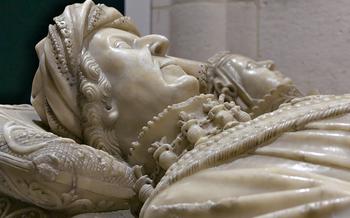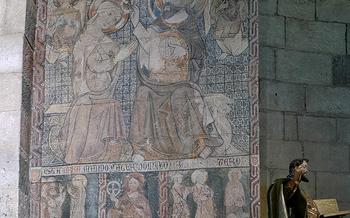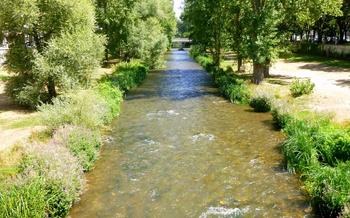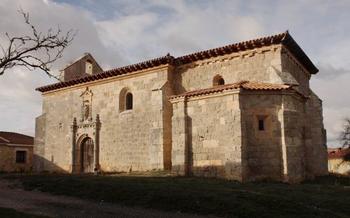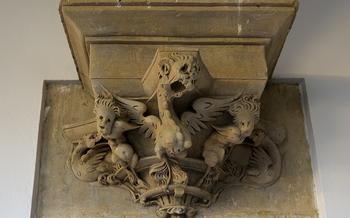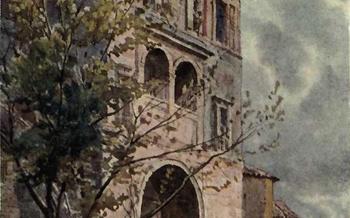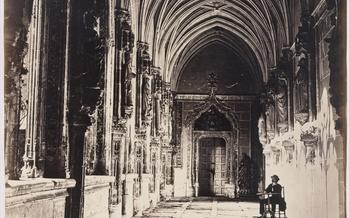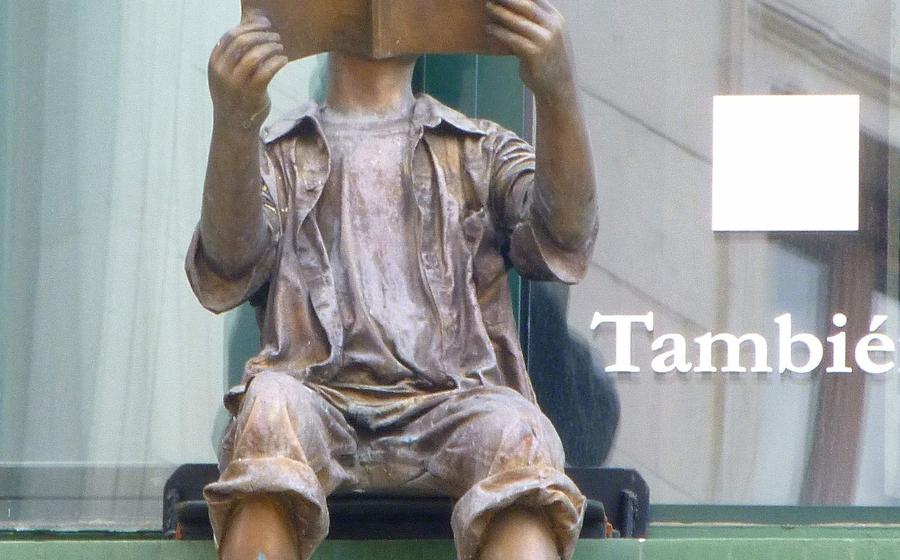
Museo del Libro Fadrique de Basilea
- Discovering the Treasures of the Museum
- The Art of Bookbinding
- Exhibitions and Cultural Events
- Interactive Displays and Multimedia Experiences
- Educational Programs and Workshops
- Guided Tours and Audio Guides
- Research and Study Facilities
- Accessibility and Facilities
- Location and Transportation
- Insider Tip: Hidden Gems and Secret Spots
Discovering the Treasures of the Museum
The Museo del Libro Fadrique de Basilea is home to a wealth of treasures that captivate and inspire visitors. Among the highlights of the collection are rare books and manuscripts that offer a glimpse into the rich history of bookmaking. One such masterpiece is the "Libro de Horas de Carlos V," an exquisitely illuminated manuscript created in the 16th century. Its intricate illustrations and ornate calligraphy showcase the exceptional artistry of medieval scribes.
The museum's namesake, Fadrique de Basilea, played a pivotal role in the preservation and promotion of Spanish cultural heritage. As Archbishop of Burgos, he commissioned the creation of numerous books and manuscripts, recognizing their importance in disseminating knowledge and preserving history. His legacy lives on through the museum's dedication to safeguarding and showcasing Spain's literary treasures.
The Museo del Libro Fadrique de Basilea stands as a testament to the enduring power of the written word. It invites visitors to embark on a journey through time, exploring the evolution of book production and the significant role that books have played in shaping our collective history and knowledge.
The Art of Bookbinding
The Museo del Libro Fadrique de Basilea houses a remarkable collection of books that showcase the evolution of bookbinding techniques over the centuries. From simple leather bindings to elaborate decorative covers, the museum's collection offers a glimpse into the artistry and craftsmanship that went into preserving and protecting books.
Visitors can admire examples of Gothic bindings, characterized by their pointed arches and intricate tooling, as well as Renaissance bindings, which often featured blind stamping and gold tooling. The museum also displays examples of Mudéjar bindings, which blend Islamic and Christian motifs, and Neoclassical bindings, which reflect the simplicity and elegance of the period.
Among the highlights of the collection is a 16th-century binding featuring a beautiful tapestry-like design, as well as a 17th-century binding adorned with silver filigree and precious stones. These exquisite bindings demonstrate the high level of skill and artistry that bookbinders achieved during this period.
The museum's collection of fine bindings also includes examples of contemporary bookbinding, showcasing the creativity and innovation of modern bookbinders. Visitors can admire bindings made from unusual materials, such as wood, metal, and leather, as well as bindings that incorporate unique and experimental techniques.
Through its collection of bookbindings, the Museo del Libro Fadrique de Basilea provides visitors with a fascinating glimpse into the history and artistry of this important craft. The museum's collection highlights the role that bookbinders have played in preserving and protecting books, as well as the evolution of bookbinding techniques over the centuries.
Exhibitions and Cultural Events
The Museo del Libro Fadrique de Basilea is not just a repository of ancient books; it is also a vibrant hub for cultural events and exhibitions. Temporary exhibitions showcase different aspects of the museum's collection, delving into specific themes or periods. These exhibitions offer visitors a chance to explore the diverse world of books and manuscripts in greater depth, gaining new perspectives and insights.
In addition to exhibitions, the museum organizes a variety of cultural events throughout the year. Lectures by renowned scholars and experts provide visitors with an opportunity to learn from leading authorities in the field of book history and conservation. Workshops and seminars offer hands-on experiences, allowing participants to engage with the museum's collection in a practical way.
These events are not only educational but also provide a platform for cultural exchange and dialogue. Visitors can interact with experts, share their own knowledge, and connect with fellow enthusiasts. The museum's commitment to cultural programming ensures that there is always something new and exciting to discover, making it a dynamic and engaging destination for visitors of all interests.
Interactive Displays and Multimedia Experiences
The Museo del Libro Fadrique de Basilea embraces technology to enhance the visitor experience, making the museum more accessible and engaging for people of all ages. Interactive exhibits invite visitors to explore the museum's collection in new and exciting ways. Multimedia presentations provide additional information and context, bringing the history of books to life.
Touch screens and interactive displays allow visitors to zoom in on intricate details of manuscripts, explore the evolution of printing techniques, and even design their own book covers. Virtual reality experiences transport visitors back in time to witness the creation of a medieval manuscript or the operation of an early printing press.
These interactive elements add a layer of engagement and excitement to the museum experience, making it a truly memorable and educational journey for visitors of all ages.
Educational Programs and Workshops
The Museo del Libro Fadrique de Basilea recognizes the importance of education and outreach, particularly for younger generations. To this end, the museum offers a range of educational programs and workshops designed to engage and inspire students of all levels. These programs provide hands-on learning experiences that allow students to explore the museum's collection and delve deeper into the fascinating world of books and manuscripts.
One popular program is the "Medieval Manuscript Workshop," where students learn about the art and techniques of medieval book production. They get to try their hand at calligraphy, illumination, and bookbinding, creating their own miniature manuscripts to take home. Another program, "The Printing Revolution," introduces students to the history of printing and its impact on the spread of knowledge. They learn about the development of the printing press, examine early printed books, and even try their hand at setting type and printing their own creations.
The museum also offers specialized workshops for older students and adults, such as paleography workshops for deciphering medieval handwriting and bookbinding workshops for creating custom-made books. These workshops provide a unique opportunity for participants to learn from experts in the field and gain hands-on experience with rare and valuable materials.
To book educational programs or workshops, groups or individuals can contact the museum's education department in advance. The museum also offers guided tours tailored to school groups, ensuring that students have a meaningful and interactive learning experience. Whether you're a student, a teacher, or simply someone with a passion for books and history, the Museo del Libro Fadrique de Basilea's educational programs offer a wealth of opportunities to learn, explore, and create.
Guided Tours and Audio Guides
Enhance your visit to the Museo del Libro Fadrique de Basilea by taking advantage of the guided tours and audio guides offered by the museum. Guided tours provide an immersive and informative experience, allowing you to delve deeper into the history and significance of the museum's collection. Knowledgeable guides will lead you through the exhibits, sharing insights, anecdotes, and little-known facts that bring the collection to life.
Audio guides are another excellent option for a self-guided exploration of the museum. Available in multiple languages, these guides offer a rich narrative that accompanies you as you browse the exhibits. With an audio guide in hand, you can set your own pace and focus on the aspects of the collection that most interest you.
To book a guided tour or rent an audio guide, simply inquire at the museum's information desk. Tours are available at specific times throughout the day, and reservations are recommended to ensure your spot. Audio guides can be rented for a nominal fee and are available on a first-come, first-served basis.
Whether you opt for a guided tour or an audio guide, you'll gain a deeper understanding and appreciation for the treasures housed within the Museo del Libro Fadrique de Basilea. These invaluable resources will enhance your visit and leave you with a lasting impression of this remarkable institution.
Research and Study Facilities
The Museo del Libro Fadrique de Basilea is not just a museum for public enjoyment; it also serves as a hub for scholarly research and academic pursuits. The museum's extensive collection of rare books and manuscripts, coupled with its specialized library and research resources, makes it an invaluable resource for researchers and scholars in the fields of history, literature, art, and bibliography.
The museum's library boasts an impressive collection of books, journals, and reference materials related to the history of books, printing, and bookbinding. Researchers can access these resources to delve deeper into specific topics of interest. The museum also provides dedicated study spaces and research facilities, allowing scholars to conduct their work in a conducive environment.
To facilitate research and collaboration, the museum offers a range of services and programs for researchers. These include access to the museum's collection, specialized research assistance, and the opportunity to participate in seminars, workshops, and conferences organized by the museum.
Whether you are a seasoned scholar or a student just starting your research journey, the Museo del Libro Fadrique de Basilea offers a wealth of resources and opportunities to support your academic endeavors. To apply for research privileges and access to the museum's collection, researchers are required to submit a formal request and provide proof of their academic affiliation and research objectives.
By fostering a vibrant research environment, the Museo del Libro Fadrique de Basilea plays a crucial role in advancing knowledge and scholarship in the field of book history and related disciplines.
Accessibility and Facilities
The Museo del Libro Fadrique de Basilea is committed to providing a welcoming and accessible environment for all visitors. The museum features wheelchair accessibility, with ramps and elevators ensuring that all areas of the museum are easily accessible. Adapted tours and programs are available for visitors with special needs, ensuring that everyone can enjoy and learn from the museum's collection. Restrooms, cloakrooms, and a cafeteria are available for the convenience of visitors. These facilities make the museum a welcoming and inclusive space for all, allowing everyone to fully engage with the museum's rich collection and cultural offerings.
Location and Transportation
The Museo del Libro Fadrique de Basilea is conveniently situated in the heart of Burgos, within the historic city center. Its central location makes it easily accessible on foot from other major attractions, such as the Burgos Cathedral and the Plaza Mayor. For those arriving by public transportation, several bus lines stop within walking distance of the museum. Additionally, there are ample parking facilities nearby for those traveling by car. Whether you choose to stroll through the charming streets of Burgos or take advantage of the convenient transportation options, getting to the museum is a breeze. Plan your visit to coincide with other sightseeing endeavors in Burgos to make the most of your time in this vibrant city.
Insider Tip: Hidden Gems and Secret Spots
Beyond the main exhibition halls, the Museo del Libro Fadrique de Basilea holds several hidden gems and secret spots that are worth exploring for a truly immersive experience. One such treasure is the museum's rooftop terrace, which offers breathtaking panoramic views of the city of Burgos and its historic landmarks. Visitors can escape the hustle and bustle of the museum and enjoy a moment of tranquility while soaking in the stunning scenery.
Another hidden gem is the museum's conservation studio, where visitors can observe the meticulous work of conservators as they restore and preserve the museum's precious artifacts. This behind-the-scenes glimpse into the museum's operations provides a unique perspective on the dedication and expertise required to maintain the collection.
For those seeking a deeper dive into the museum's holdings, the rare book room is a treasure trove of hidden knowledge. This restricted-access area houses some of the museum's most valuable and fragile manuscripts, which are available for consultation by researchers and scholars upon request. With its hushed atmosphere and aura of antiquity, the rare book room offers a glimpse into the fascinating world of early printing and bookmaking.
